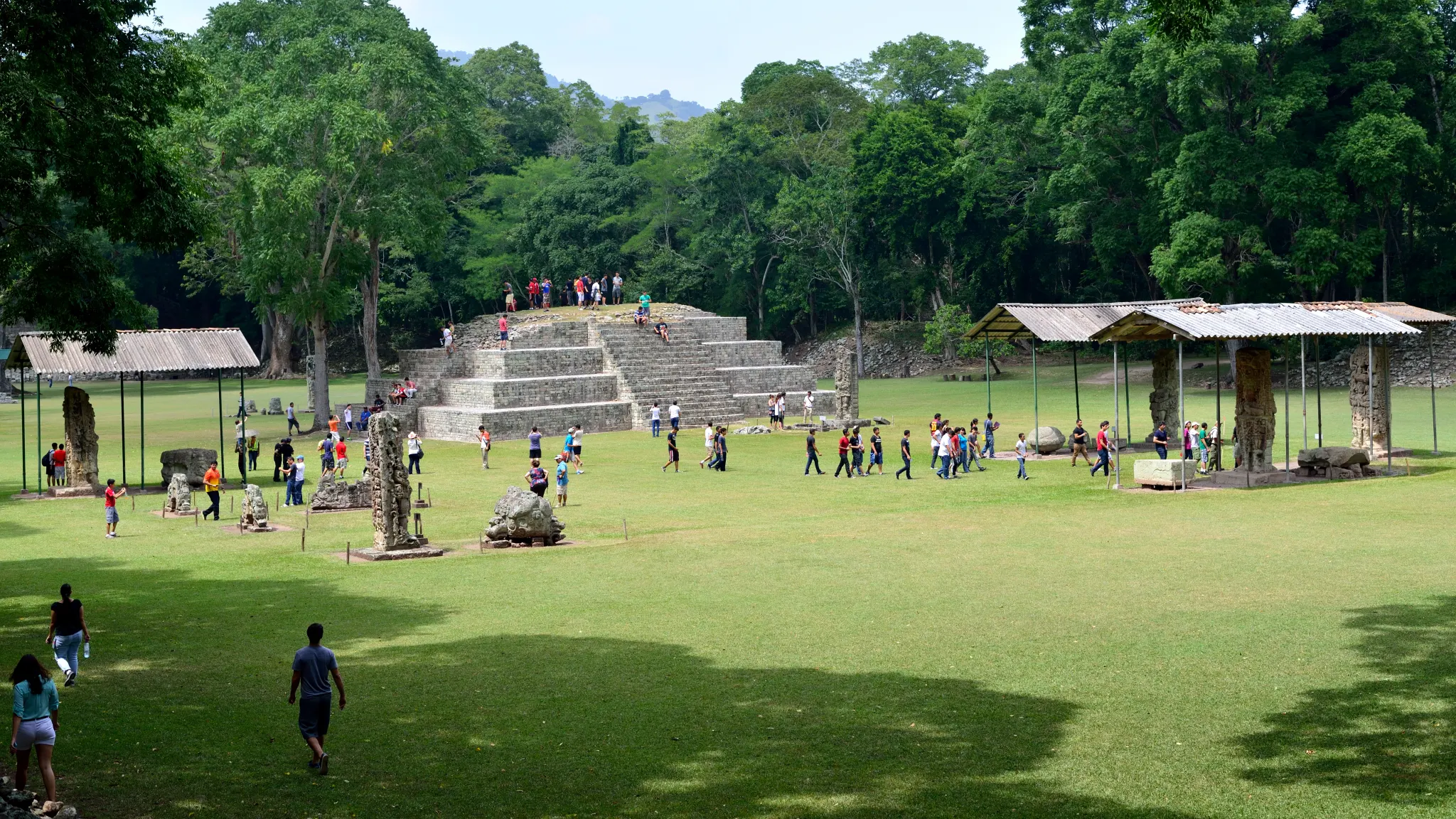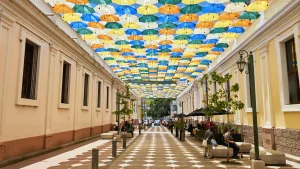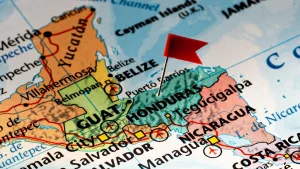Archeology Activities in Honduras

Ruinas de Copán Archaeological Park, Copán
It is a collection of monuments of extraordinary individual value and a monument in itself (Cultural Heritage of Humanity, UNESCO). The richness, style, and finishes of its sculptures and architecture are unique among discovered Mayan sites.
This political and ceremonial center, capital of the city-state of Copán, ruled the southern border of the Mayan civilization, and had 21,000 inhabitants, including some non-Mayan peoples, between the 5th and 9th centuries. This different origin is reflected in its own sculptural style, which provides the longest text, carved in stone, in the Mayan world: the Hieroglyphic Stairway, which adjoins the other buildings of the Acropolis, including the Ball Park, the images of rulers and altars in the Great Plaza, the tunnels and the set of graves located in the vicinity of the archaeological park.

Part of the beauty of Copán is covered by the subsoil of the monuments planted in a natural park where animals still live in their habitat, such as the macaws that fly freely in the locality and the plants that animated the ceremonial and political imagery of this impressive monumental and cultural display.
Altar Q stands out, the best known monument in Copán. It was dedicated by King Yax Pasaj Chan Yopaat in 776 AD. C. and has representations of the first 16 kings of the Copán dynasty carved on its sides. On the other hand, the Xukpi Stone is a dedicatory monument of one of the first phases of Temple 16 (Structure 10L-16), built to honor K’inich Yax K’uk ‘Mo’, among others.
Macaw Mountain Bird Park and Nature Reserve
Copán is a center for the conservation, breeding, rehabilitation and lodging of birds, located a few kilometers from the center of the town of Copán Ruinas, on the road on the street that leads to Aguas Calientes, also known by the name of hot springs.
A colorful ecological park surrounded by centenary native trees and a coffee farm, and crossed by the refreshing waters of the Cakaguatales creek, on which you can have breakfast, snack or lunch after walking among more than 180 species of Honduran and Central American birds, in addition of birds that emigrate from the Caribbean and from our brother country of Mexico, and some from South America.
Do not miss the opportunity to feel how the legs of a red, green or blue guara rest on your arms, your shoulders or your head while it spreads its beautiful wings wide. This is the best time to take a photo of your vacation worth sharing with your friends.
Rastrajón, Copán
In this archaeological site, recently opened to the public, you have a panoramic view of the Copán valley, including the Acropolis and all the buildings of the Copán Ruinas Archaeological Park. It was a religious place, but above all a guard and defense post for the city-state of Copán. Here you can appreciate other shapes and motifs, buildings with vaulted rooms, built with stone blocks and furnished with benches duly molded to their surroundings.
Its walls are adorned on the outside with fine sculpture. It was occupied and used in two moments: in the year 425, before the establishment of the dynasty of K’inich YaxK’uk’Mo ‘, the founder and first ruler of the pre-Columbian Mayan civilization in Copán, whose name means’ First Quetzal Guacamaya ‘, who ruled the city for only 11 years; and after the collapse of Copán, around 822 AD Scientists continue to excavate and, above all, piece together the pieces of the wonderful past of Copán. Rastrajón is the most recent result.
The Fortress of San Fernando, Omoa, Cortés
The fortress was erected at the end of the 18th century a few meters from the coast to defend Honduras from the attacks of pirates, buccaneers and corsairs that threatened the Caribbean in its time. Today the sea is several meters further away. Seen from the air, it gives the impression that it is a bow aimed at the sea, already taut and with the arrow ready to fire. It offers the coast a wall in a semicircle, built in part, like the rest of the fort, with remains of coral.
In its almost 340 years it has been a bastion, a trench, a market, a prison and a monument… and people call it “El Castillo”. It is the most important colonial legacy on the Caribbean coast of Honduras and perhaps the main military construction of the time in Central America. It has 31 vaults under which there are rooms, a kitchen and a chapel, and it is not difficult to imagine the smell of gunpowder from the terrace, populated with cannons during combat.
The Fortress of Santa Bárbara, Trujillo, Colón
The natural conditions of the Bay of Trujillo are ideal for establishing one of the best ports in the area. The Punta Castilla barrier not only protects the coast from storms but also becomes a refuge for deep and calm waters. During the colonial period it suffered the attacks of pirates and corsairs of different nationalities who were at the service of different crowns.
The Spanish understand the importance of the square and the need to equip it first with artillery and, years later, with a defensive bulwark. Thus, almost in the middle of the seventeenth century, the construction of the Santa Bárbara Fortification was completed, whose cannons still point alert towards the sea before the possibility of another of the many attacks that resisted. Currently, the colonial monument is open to visits and is one of the main tourist attractions in Trujillo.
It was declared a «National Monument» on March 8, 1990, under Presidential Agreement No. 049. In 1997 it became the property of the Honduran Institute of Anthropology and History. Inside the Santa Bárbara Fortress there is a museum with Archaeological, Colonial and Republican exhibition rooms. The museum has a varied collection of objects of great historical and cultural value that reflect the pre-Columbian and colonial past of the city.
The Fort of San Cristóbal, Thank you, Lempira
It dominates the city of Gracias from the highest part of the San Cristóbal hill. It is built following the plans of President Juan Lindo in the second half of the 19th century to defend the city from the invasion of Guatemalan and Salvadoran armies in the conflictive years of the post-independence, federal and internal wars between liberals and conservatives.
The land was an estate owned by Lindo himself, which is buried in the fort, although it is José María Medina who built it between 1864 and 1875. As one approaches the white walls of its star-shaped wall, six towers can be distinguished that they defended the perimeter of the city with cannons and riflemen, and with it, the western part of the country. In addition, you are greeted by two cannons that served in the Fortress of San Fernando in Omoa (Spanish fortress located in the coastal city of Omoa).
The name of the fort derives from Cristoforo, according to Catholic tradition: «the one who bears Christ», a symbol of its physical strength. The project for the conditioning and enhancement of the fortress was financed by the Presidency of the Republic through the Honduran Institute of Tourism and in conjunction with the Municipality of Gracias.
Los Naranjos Eco-Archaeological Park, Yojoa Lake
It is the point where nature and the vestiges of a 2,800-year-old pre-Columbian city meet. The eco-archaeological park is located in the community of El Jaral, in the municipality of Santa Cruz de Yojoa, in the department of Cortés, approximately 3 kilometers away from the municipality of Peña Blanca. Here you are greeted by a museum with archaeological finds from the park.
Its three paths through the tropical broadleaf forest are one of the best places on the lake for hikers. A suspension bridge adds another spice to the journey, but the highlight is the vestiges of a city from 800 BC whose community took advantage of the lake basin and its rivers to trade in ceramics, quetzal feathers and cocoa. Studies are still continuing to identify the origin of this civilization, but its features are characteristic of the Lenca culture. There are mounds up to 20 meters high that speak of the importance of the city. And there is even more: the “Isla de las Ventanas”, a demanding 3-hour tour that completes the eco-archaeological experience with adventure.
White City, Thank God
The Legend of the White City in Honduras originated from short fragments of different stories. In the 1920s of the 16th century, Hernán Cortés, a conqueror, wrote to the King of Spain, Carlos V, about the incredible wealth of one of the provinces of the conquered territories, whose capital was the White City of Gold.
The most sensational discovery was made by Theodore Morde, who said that he had found the ruins of the giant structures deep in the jungle. According to Morde, his guides told him about a temple dedicated to the Monkey God. There are guided tours throughout the country through the Mosquitia jungle for the curious adventurers. The Honduran Institute of Anthropology allows access to groups with scientific interest prior to an evaluation.




